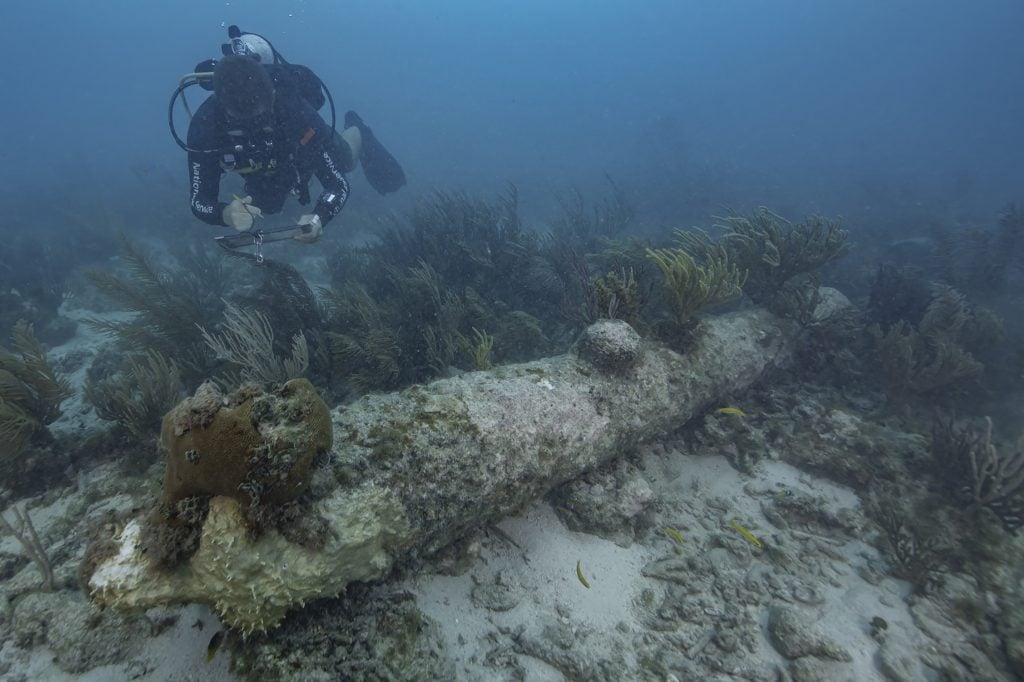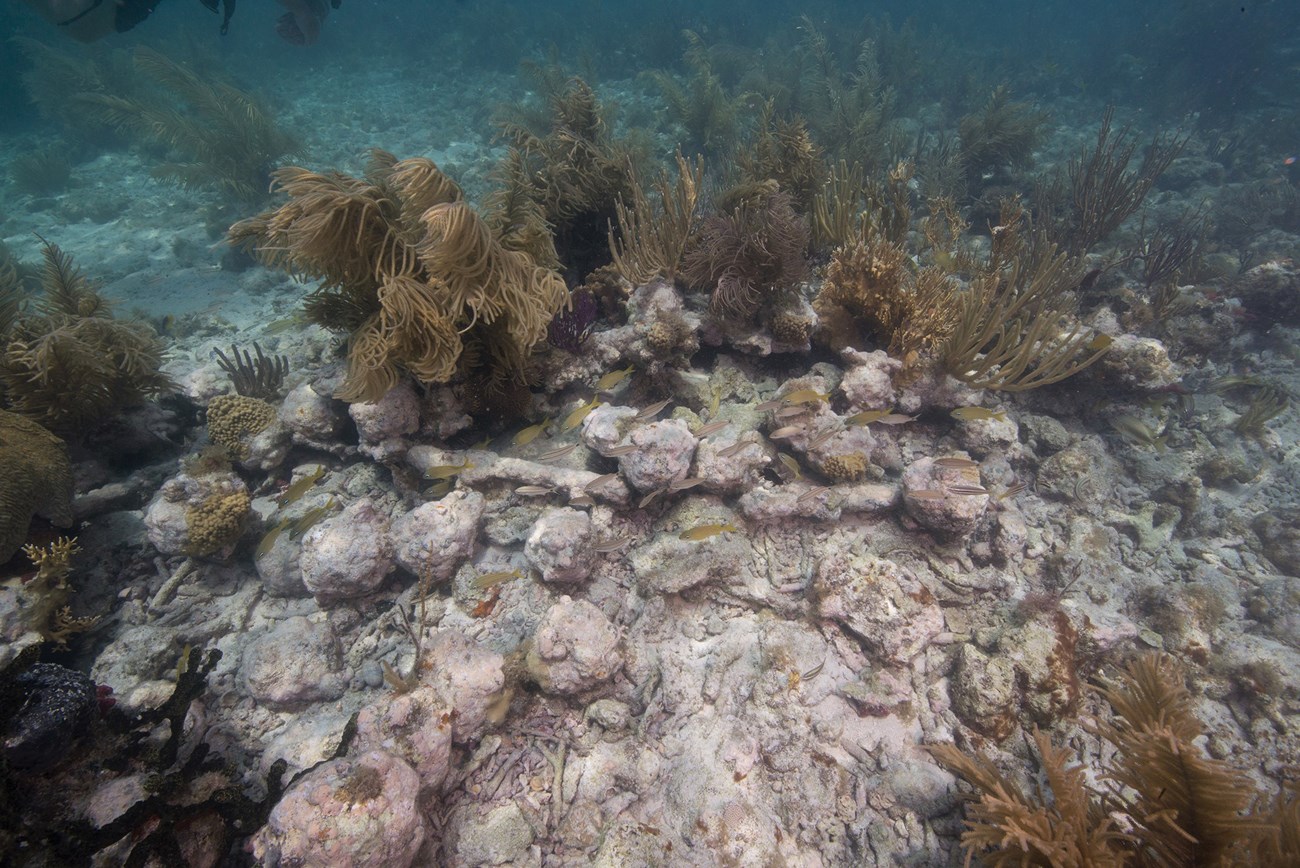Archaeology & History
Clues in an Old Logbook Lead Archaeologists to a Lost British Shipwreck
The ship was found off the coast of Florida.

Archaeologists have uncovered the remnants of a British warship that was sunk off the Florida coast 250 years ago by paying close attention to the margins of a logbook.
HMS Tyger ran aground on coral reefs around Dry Tortugas in 1742 while pursuing enemy ships in the Anglo-Spanish War. Despite efforts to save the ship, which included moving anchors to deeper water and throwing cannons overboard, it was abandoned following bad weather.
Remnants of the ship, which was 130 feet long and built in 1647, were first found off Garden Key in 1993. The new research acts as a confirmation by connecting the five cannons found 500 yards from the wreck with those detailed in the logbook.
The research was conducted by archaeologists from Dry Tortugas National Park, the Submerged Resources Center, and the Southeast Archeological Center, with findings recently published in International Journal of Nautical Archaeology.

Image showing concreted cannonballs on the seafloor. Photo: Brett Seymour (NPS).
“This discovery highlights the importance of preservation in place as future generations of archaeologists, armed with more advanced technologies and research tools, are able to reexamine sites and make new discoveries,” said Josh Marano, the lead maritime archeologist.
Under international treaty, the ship remains the property of the British government. Although National Park Service archaeologists will continue to research and monitor the site, the ship’s location will not be made publicly available in order to protect it. “Shipwrecks at Dry Tortugas are threatened by both natural and cultural degradation,” National Park Service said.
Despite reaching the safety of dry land, matters only became more difficult for HMS Tyger’s crew of roughly 300 men. Marooned for more than two months on Garden Key, they battled heat, mosquitoes, and thirst. Eventually, they built vessels from the wreckage of their ship and made a journey of 700 miles through enemy-controlled waters to Port Royal, Jamaica. The journey took 55 days.
“Archaeological finds are exciting, but connecting those finds to the historical record helps us tell the stories of the people that came before us,” said James Crutchfield Dry Tortugas’ park manager. “This particular story is one of perseverance and survival. National parks help to protect these untold stories as they come to light.”
HMS Tyger was the first of three British ships to sink off the Florida Keys. Archaeologists had previously identified the locations for HMS Looe and HMS Fowey, which rests in Biscayne National Park and is co-managed by the U.S. government and Britain’s Royal Navy.





